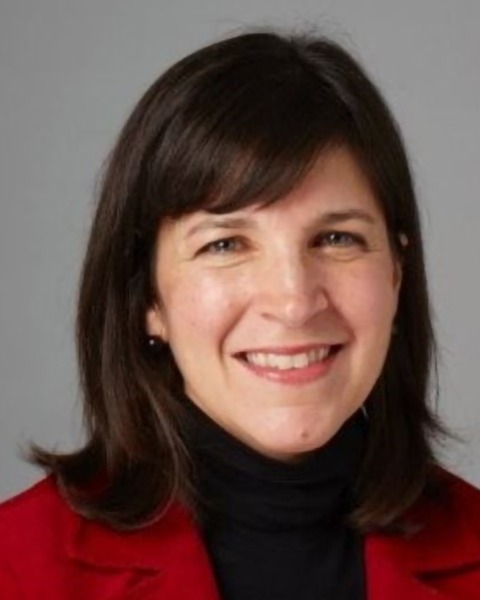Children with Chronic Conditions
Category: Abstract Submission
Children with Chronic Conditions III
598 - Mapping the PIK3CA-Related Overgrowth Spectrum (PROS) Patient and Caregiver Journey Using a Patient-Centered Approach
Monday, April 25, 2022
3:30 PM - 6:00 PM US MT
Poster Number: 598
Publication Number: 598.403
Publication Number: 598.403
Dawn Aubel, Novartis Pharmaceuticals Corporation, East Hanover, NJ, United States; Lara Rodriguez-Laguna, La Paz Hospital, Madrid, Madrid, Spain; Kristen Davis, CLOVES Syndrome Community, West Kennebunk, ME, United States; Mellenee Finger, K-T Support Group, Milford, OH, United States; Robin G. Vlamis, Solstice HealthCommunications, Morristown, NJ, United States; Craig Johnson, University of Central Florida College of Medicine, Orlando, FL, United States

Dawn Aubel, EdD, MPH, APNc
Director, Global Patient Engagement
Novartis Pharmaceuticals Corporation
East Hanover, New Jersey, United States
Presenting Author(s)
Background: PIK3CA-related overgrowth spectrum (PROS) disorders are rare, chronic conditions requiring care from a multidisciplinary team. PROS is driven by somatic, gain-of-function mutations in PIK3CA resulting in phosphatidylinositol 3-kinase (PI3K) signaling pathway hyperactivation. PROS includes overlapping phenotypes (including overgrowth and vascular malformations) that vary in severity; each case is unique with different, complex experiences.
Objective: To describe the PROS experience from the patients’ and caregivers’ perspective, from onset to diagnosis to treatment and support.
Design/Methods: The PROS patient journey was developed using a literature review, an ethnography study, health care professional (HCP) research, and social listening, and validated with patients, caregivers, and patient advocates. HCP research included 94 PROS and vascular anomaly centers in the US and Europe. Ethnographic research included 24 patients, caregivers, and/or advocates. Key priority areas were identified, including barriers to quality care.
Results: Visual mapping of the PROS patient and family journey was developed to identify key personal health and system issues, and opportunities for improvements during patients’ lifespans. Maps were developed for 3 conditions: Klippel-Trénaunay (K-T) syndrome; congenital lipomatous overgrowth, vascular malformations, epidermal nevi, scoliosis/skeletal and spinal anomalies (CLOVES) syndrome; and megalencephaly/capillary malformation (M-CM) syndrome. Most patients with PROS and their families struggle with a long path to diagnosis, access to genetic testing, finding qualified specialists, major medical events, comorbidities, frequent hospitalization, impact on school/work, and financial pressures. Lack of effective pain management emerged as a major issue. Challenges to quality care shift throughout patients’ lifespans; transition from pediatric to adult care can be especially difficult. Patients with visible overgrowth/physical differences often deal with unwanted attention. Depression and anxiety are common, and emotional health is often not adequately addressed.Conclusion(s): This PROS patient journey was created in collaboration with patients, caregivers, and advocates. This novel methodology, which could be applied elsewhere, can more accurately identify areas of unmet need, barriers to care, education topics, and assist HCPs in understanding patient and family perspectives.
Objective: To describe the PROS experience from the patients’ and caregivers’ perspective, from onset to diagnosis to treatment and support.
Design/Methods: The PROS patient journey was developed using a literature review, an ethnography study, health care professional (HCP) research, and social listening, and validated with patients, caregivers, and patient advocates. HCP research included 94 PROS and vascular anomaly centers in the US and Europe. Ethnographic research included 24 patients, caregivers, and/or advocates. Key priority areas were identified, including barriers to quality care.
Results: Visual mapping of the PROS patient and family journey was developed to identify key personal health and system issues, and opportunities for improvements during patients’ lifespans. Maps were developed for 3 conditions: Klippel-Trénaunay (K-T) syndrome; congenital lipomatous overgrowth, vascular malformations, epidermal nevi, scoliosis/skeletal and spinal anomalies (CLOVES) syndrome; and megalencephaly/capillary malformation (M-CM) syndrome. Most patients with PROS and their families struggle with a long path to diagnosis, access to genetic testing, finding qualified specialists, major medical events, comorbidities, frequent hospitalization, impact on school/work, and financial pressures. Lack of effective pain management emerged as a major issue. Challenges to quality care shift throughout patients’ lifespans; transition from pediatric to adult care can be especially difficult. Patients with visible overgrowth/physical differences often deal with unwanted attention. Depression and anxiety are common, and emotional health is often not adequately addressed.Conclusion(s): This PROS patient journey was created in collaboration with patients, caregivers, and advocates. This novel methodology, which could be applied elsewhere, can more accurately identify areas of unmet need, barriers to care, education topics, and assist HCPs in understanding patient and family perspectives.
